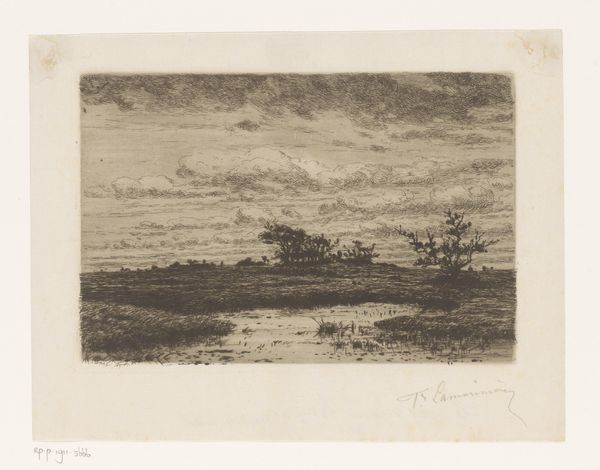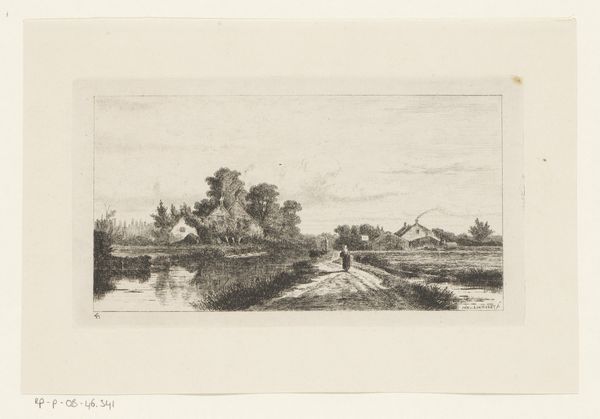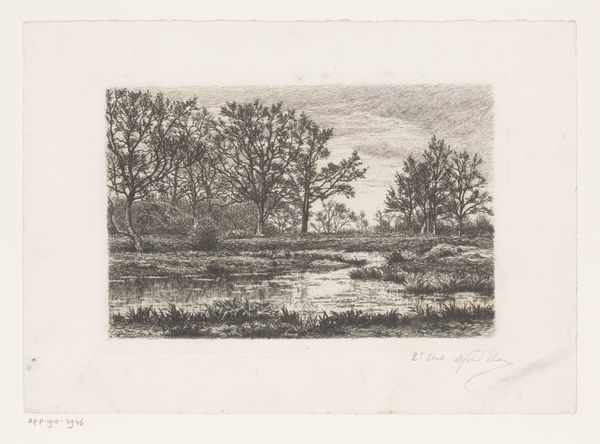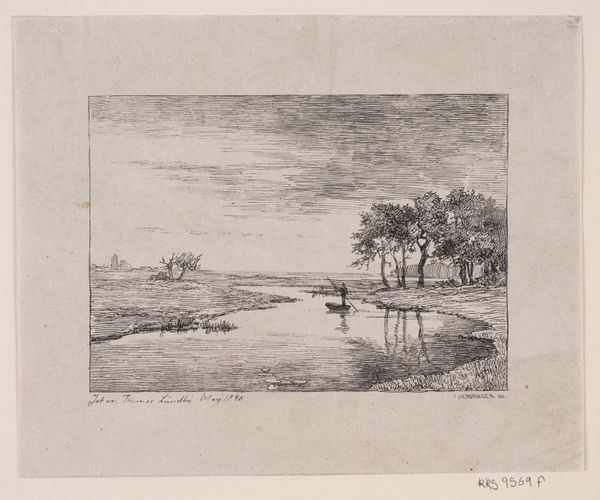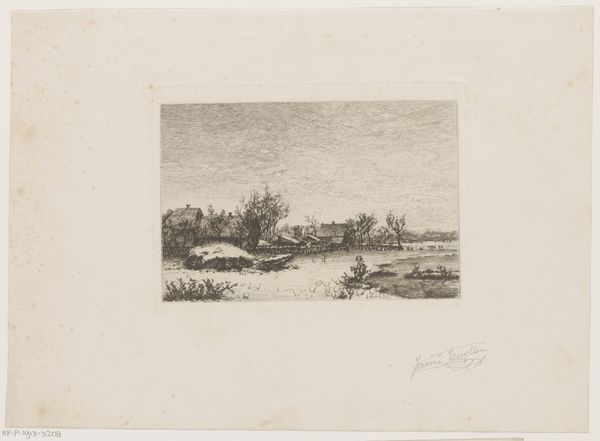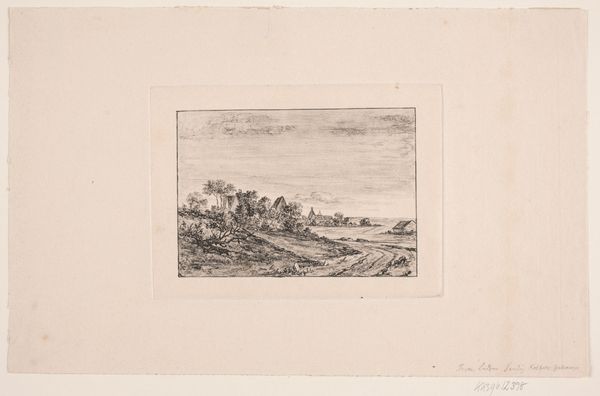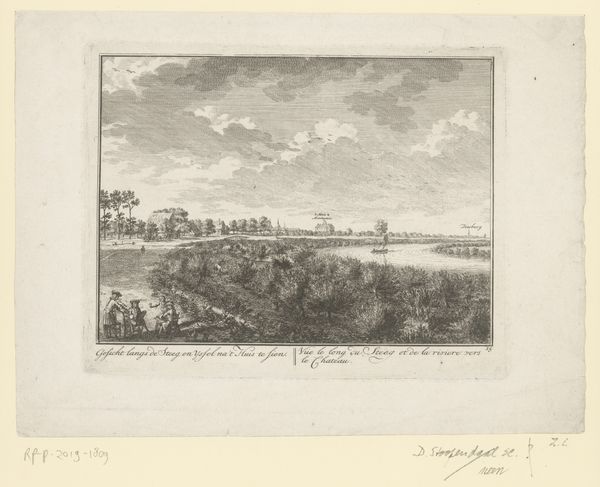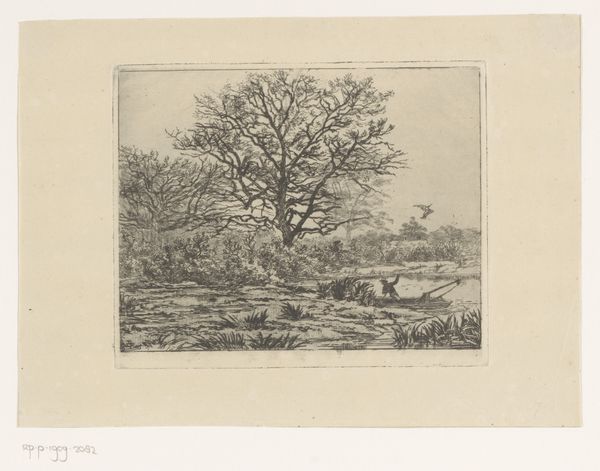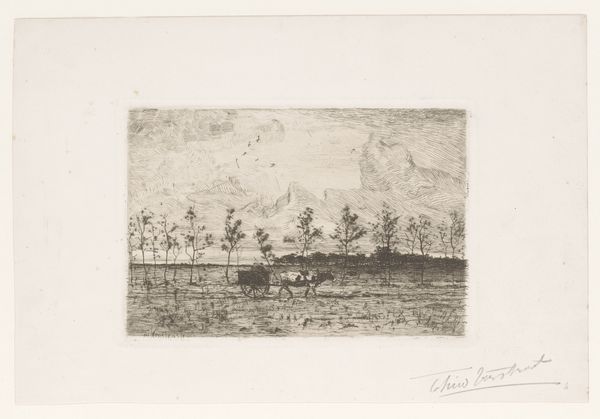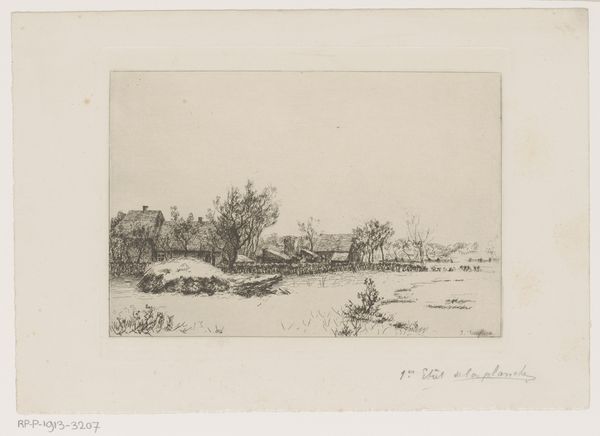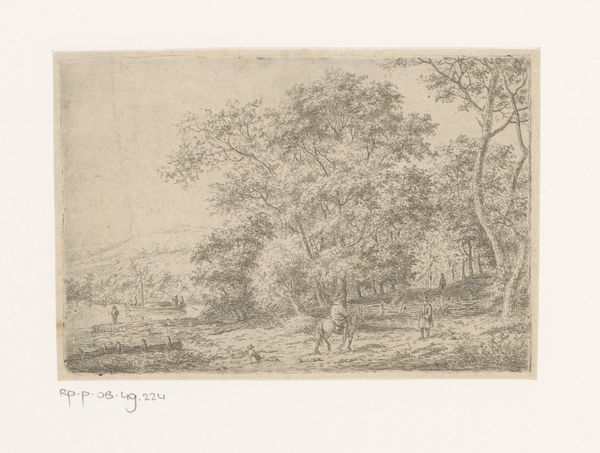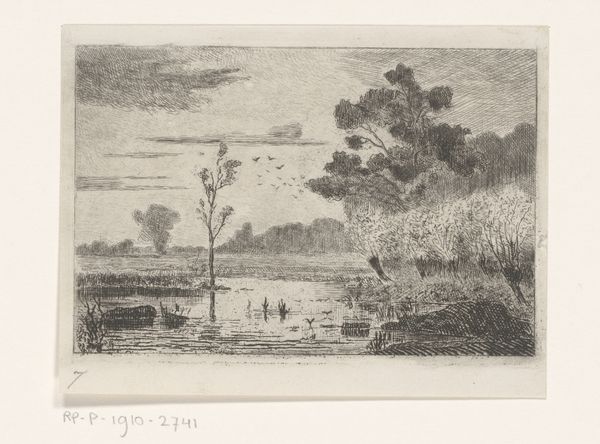
Dimensions: height 94 mm, width 142 mm
Copyright: Rijks Museum: Open Domain
Jean Pierre François Lamorinière made this etching, “Flooding in the Polders,” in the 19th century. Its subdued tones and focus on the flatness of the landscape evokes the unique geographical and economic conditions of the Netherlands. The image’s horizon line sits very low, emphasizing the expanse of sky above. The land, a polder, has been artificially reclaimed from the sea through a system of dikes and canals. The scene depicts what happens when that system fails. The water has risen. The buildings appear stranded. This disaster would have impacted the agriculture that was vital to the Dutch economy. This image underscores how the Dutch have long battled the natural world, and how their social structures are deeply intertwined with that struggle. Studying agricultural records and the history of Dutch water management helps us to understand the social conditions in which this image was made. Art, as we see here, is contingent on such contexts.
Comments
No comments
Be the first to comment and join the conversation on the ultimate creative platform.
